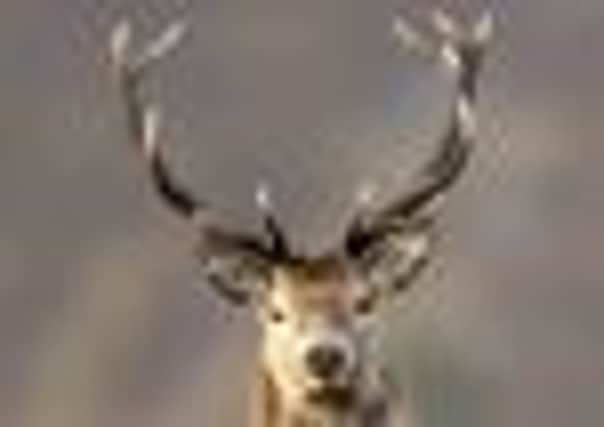Experts urge end to cull of Monarch of the Glen on Royal Deeside


Earlier this year the trust appointed an independent review panel to examine its deer management policy on the estate near Braemar following a public outcry over the scale of the cull, which has resulted in the slaughter of thousands of deer since 1995.
The panel’s report states that the current level of culling cannot be sustained and that in future most red deer should be shot as sporting stags.
Advertisement
Hide AdAdvertisement
Hide AdThe experts are also recommending that the trust should erect strategic fencing, with provision for adequate winter cover and foraging, to reduce incursions of deer into the pine forest regeneration zone.
Last December, Stewart Cumming, 64, the former head gamekeeper at the estate, took early retirement in protest at the “relentless, year-round slaughter of deer” on the 29,380-hectare estate, one of the most important nature conservation areas in the UK.
The cull began as part of a deer management policy to promote the regeneration of the ancient Caledonian pine forest at Mar Lodge which resulted in the numbers of deer on the estate being cut from a population of around 3,350 in 1995 to an estimated current population of 1,650 across the estate.
The NTS-commissioned report states that the “significant degree of ignorance and misunderstanding” of the trust’s management policy for Mar Lodge has led to a “significant degree of mistrust” with which the NTS, in its ownership of Mar Lodge Estate (MLE), is viewed by a number of people.
According to the report 50 per cent of respondents criticised the impact the current management approach of “intensive culling of deer” was having on the local economy. It continues: “Allied to this was the criticism primarily from the local community of the culling methods used, particularly out-of-season and night shooting and their impact on deer welfare.”
The estate has a declared aim of having between 80 and 100 stags a year killed for sport in addition to the cull.
But the report states: “It is apparent that, now that populations have reached target levels, continued culling at these levels is unsustainable.
“Current populations are estimated at around the minimum threshold number of 1,650. The analysis leads to the conclusion that if the estate is indeed to maintain a sporting cull of 80-100 stags then no further reduction in standing stocks can be accommodated without compromising that objective; and the bulk of all stags shot in future must be shot as sporting stags.”
Advertisement
Hide AdAdvertisement
Hide AdTrust chairman Sir Kenneth Calman said: “The recommendations will now be carefully considered to determine how we take them forward, in the best interests of this extraordinary place.”
Peter Fraser, vice-president of the Scottish Gamekeeper’s Association, welcomed the panel’s recommendations.
He said: “There has been a massive deterioration in deer numbers and 15 years of mismanagement. It has affected the surrounding sporting estates and local businesses. The warnings were there. You cannot regenerate trees on an open hill where there are deer, without fences.”
The report has made eight recommendations which cover a range of issues including the balance of the estate’s functions, alterations to fencing, woodland management, heather management in both the regeneration and moorland zone, and the management structure.